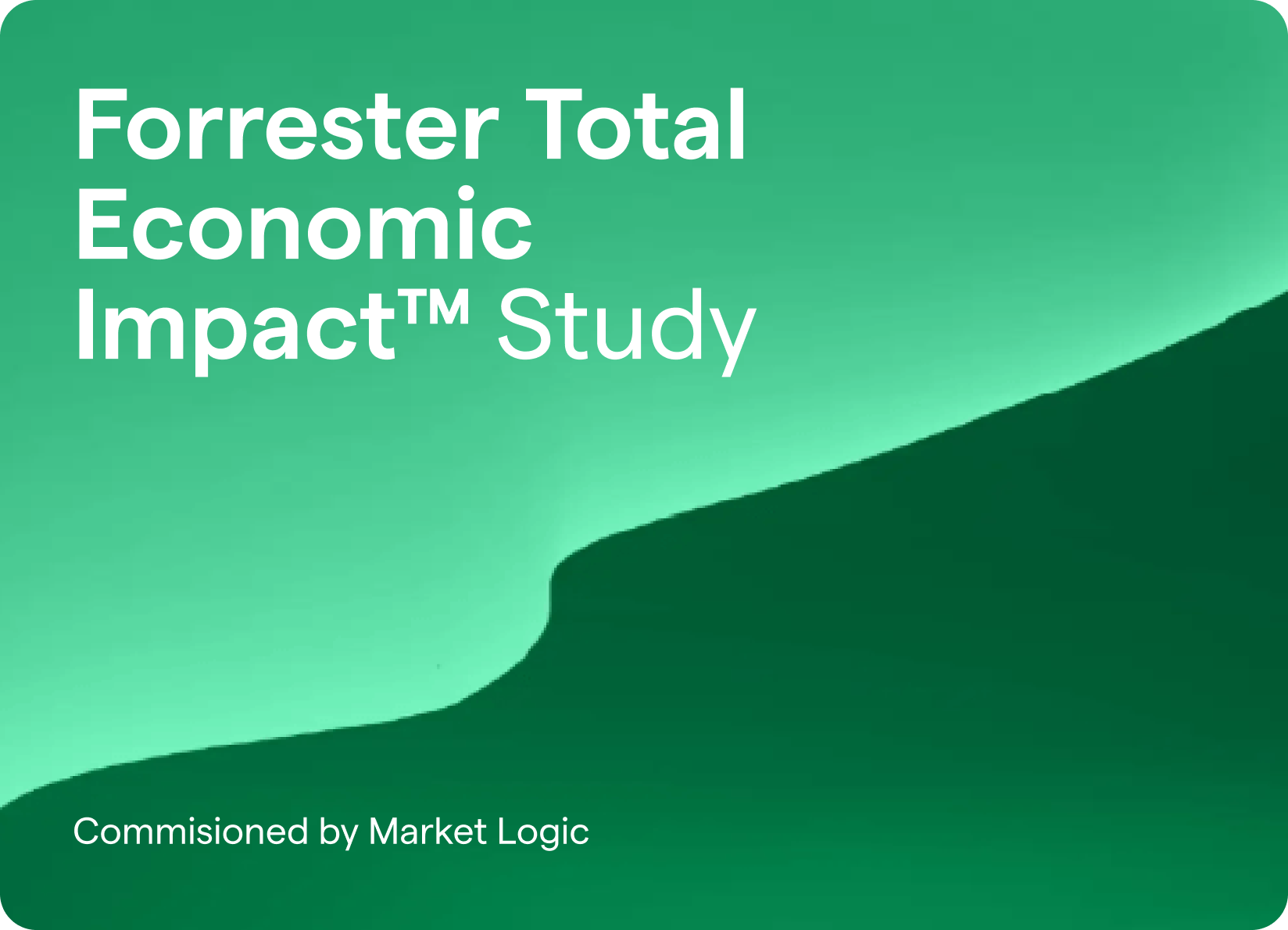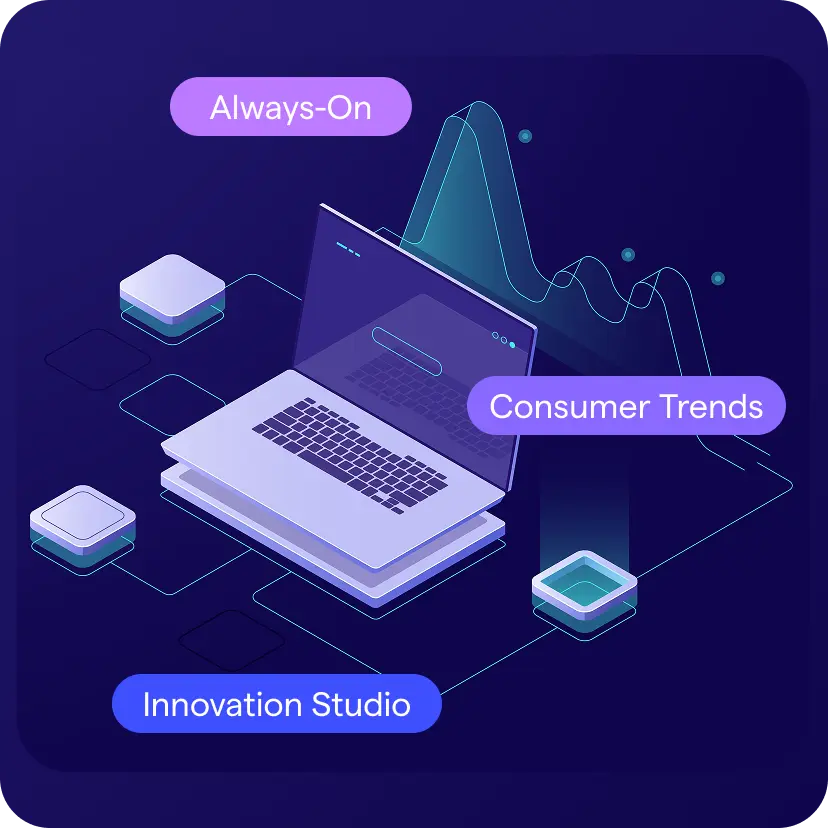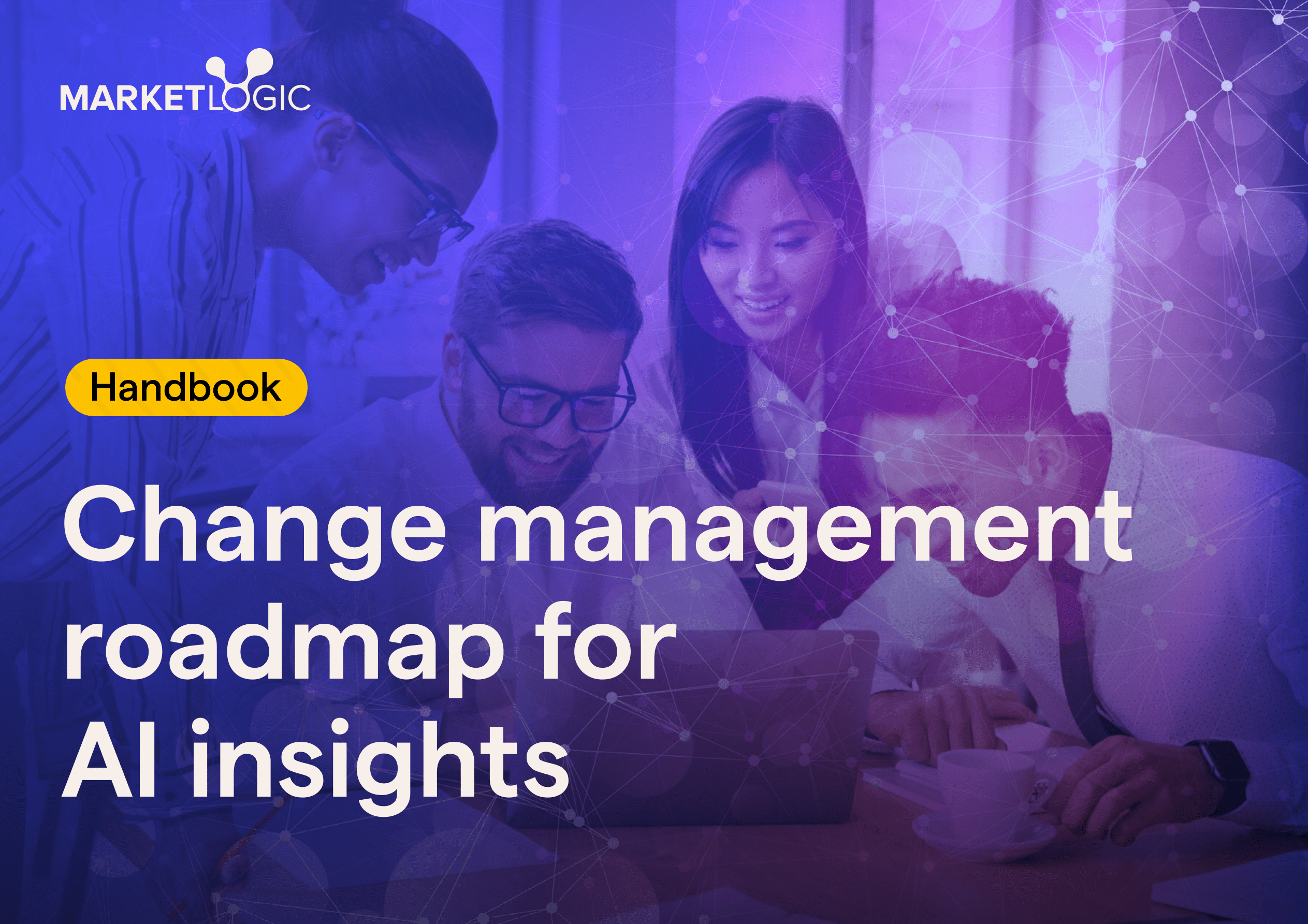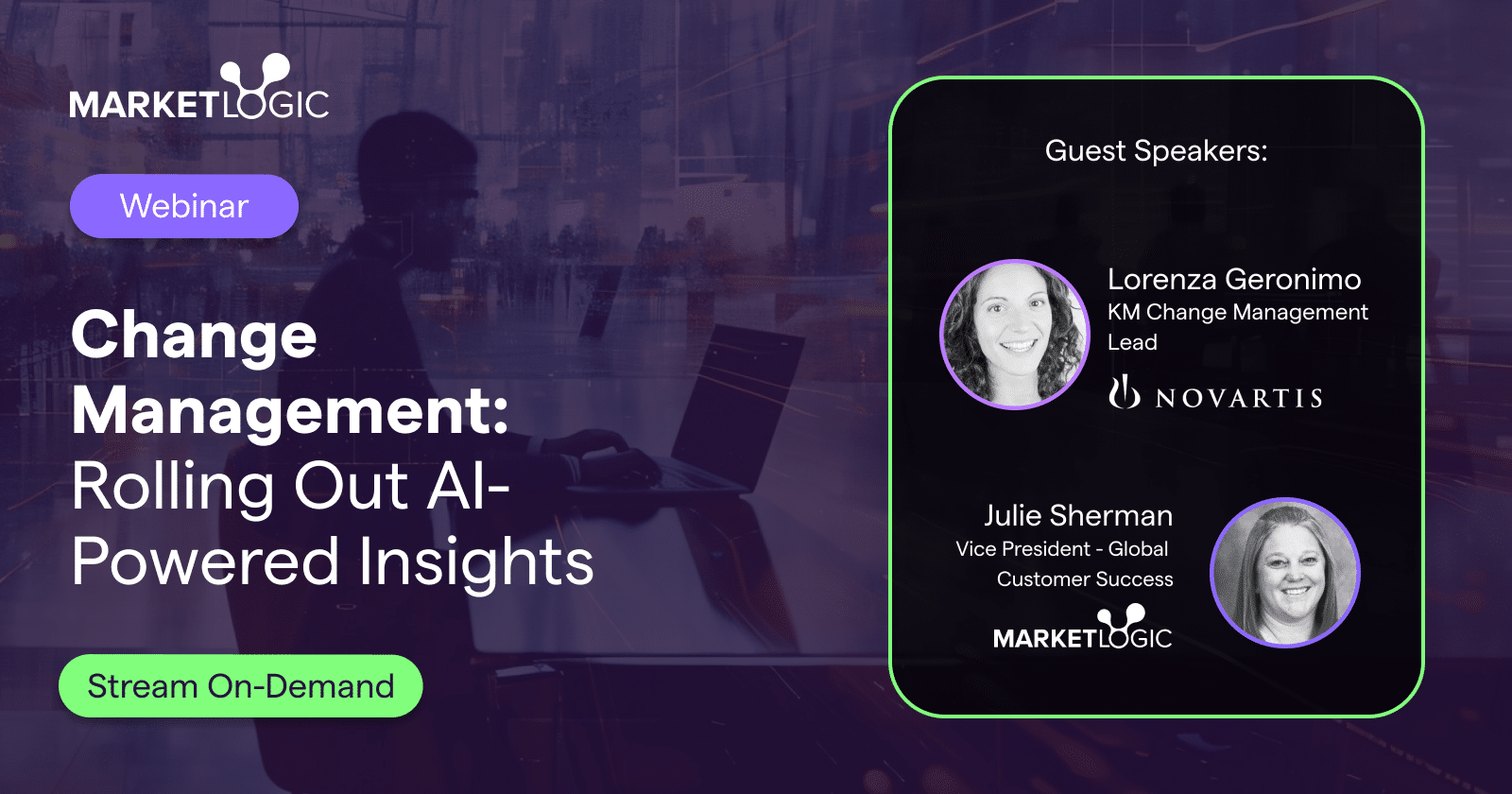Market Logic recently hosted an exclusive Insights & Innovation Leadership Dinner in Amsterdam. The event brought together over 40 senior leaders from the consumer insights and innovation community to explore how artificial intelligence (AI) — and emerging innovations like Agentic AI — are transforming the way companies generate, access, and activate insights to drive innovation.
The discussion featured three leading voices at the intersection of marketing, insights, and technology: Mathilde Beljaarts, Superior Proposition Insights Leader at Philips; Richard Davies, founder of Alchemy RX; and Olaf Lenzmann, Chief Innovation and Product Officer at Market Logic. Their conversation painted a nuanced picture of transformation, highlighting opportunities, exposing pitfalls, and reframing what it means to lead with insight in the age of AI. We summarize key takeaways from the discussion below.
The Innovation paradox: More data, less insight?
In a world defined by velocity and volatility, companies face unprecedented pressure to deliver innovation, and fast. Yet, paradoxically, many are investing less in the insights and innovation functions that underpin long-term growth. As Davies noted, this reflects a broader cultural tension: while data is more accessible than ever, genuine insight remains elusive.
Too often, teams rely on gut feel or skip essential steps. In the rush to launch, they fail to ground new concepts in consumer reality. The panel consensus is: Innovation is becoming a numbers game: more ideas, faster, but also better. That requires deep consumer understanding, not just surface-level data.
“We’ll never win on speed alone,” Beljaarts noted.
“There are always faster players in the market. What gives us the edge is deep consumer insight.”
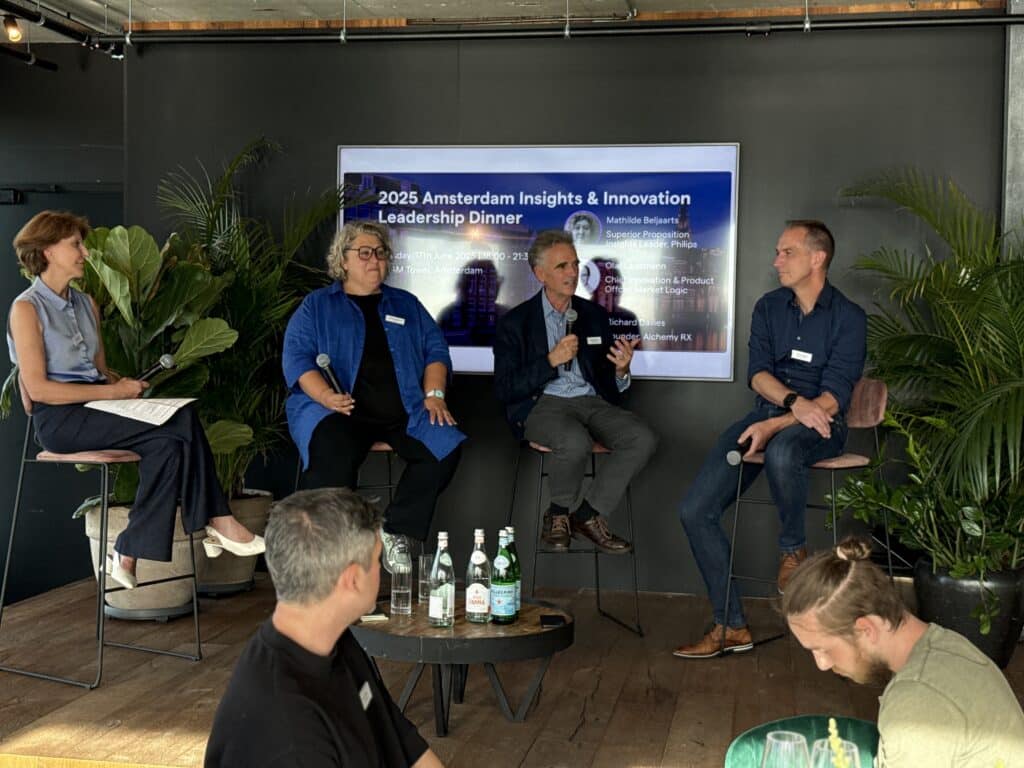
The accessibility gap: Why insights still get lost
Despite the proliferation of research platforms and digital repositories, one of the biggest barriers to effective insight work remains: people don’t use what already exists.
Knowledge stays siloed, insights go underutilized, and duplication of effort is common. “You can have all the research portals you want,” said Lenzmann, “but if people don’t use them, it’s wasted.”
Beljaarts offered a concrete example: “It can be easy to redo work, because people don’t know what already exists or can’t find it. AI helps us avoid that.”
At Philips, tools like DeepSights are bridging this accessibility gap. They help teams surface relevant insights faster, reduce redundancy, and accelerate timelines.
Beljarts noted:
“We’re seeing timelines cut in half, sometimes more. But the real magic is the creative spark. AI doesn’t just summarize, it inspires.”
Davies emphasized the power of accessibility across organizational levels. He noted that the real value of tools like DeepSights lies in democratizing access — not just for insights teams, but for marketing, R&D, sales, and even the C-suite. “I’ve seen firsthand how proximity to research changes decision-making,” he said. “In some cases, CEOs with access to Market Logic platforms were more in tune with the consumer than their brand managers, because they dive into the data themselves.”
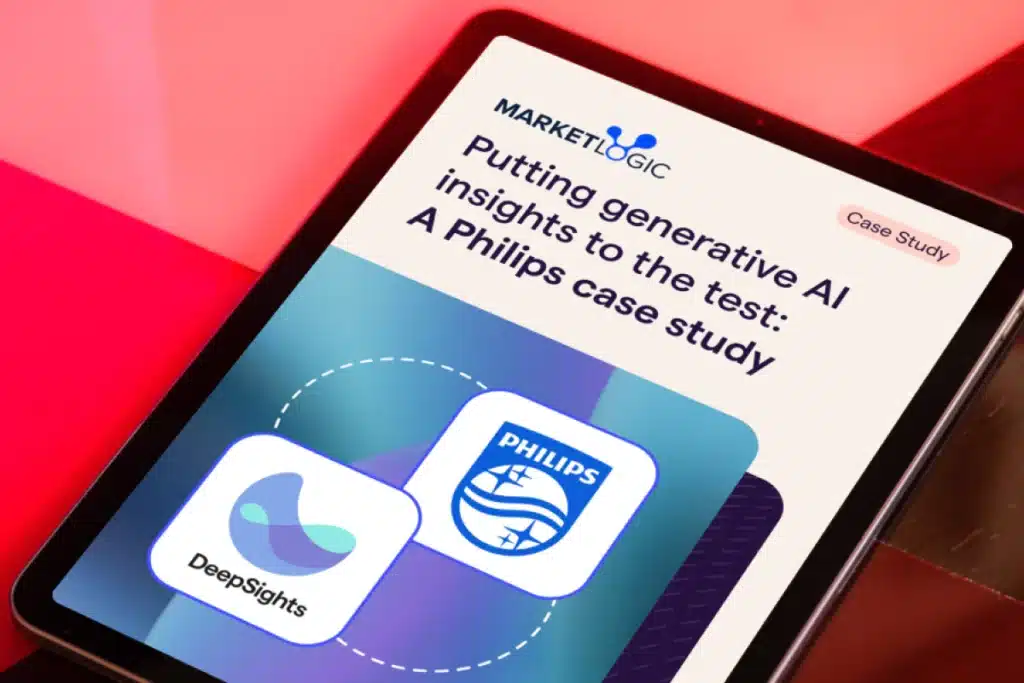
More than speed: Structuring innovation with insight
With great power comes great temptation. AI’s ability to compress timelines is real, but without structure, speed can lead to shallow thinking.
“It’s tempting to skip steps,” warned Beljaarts, “ but we need to make sure we keep doing things in the right order: insight before idea, not the other way around.”
To guard against this, Philips has launched training programs to ensure teams prompt AI tools responsibly and validate outputs with consumer input. “There’s a reason we call it best practice,” added Lenzmann. “If you skip validation, if you ignore consumers, AI can’t save you.”
Davies offered a cultural framing:
“There’s no excuse for marketers not to use insights anymore. But we have to teach them the difference between an observation and an insight.”
Governance, guardrails, and the human hand
As AI becomes more embedded in workflows, governance becomes critical. Panelists emphasized the need to embed brand values, strategic priorities, and ethical boundaries into AI systems from the outset.
“The most dangerous thing is treating every number as an insight,” one participant warned. Data without context can be misleading. True insight requires interpretation, synthesis, and judgment — none of which can be fully automated.
Olaf Lenzmann agreed, emphasizing that while AI can deliver speed and scale, it still has blind spots. Organizations must carefully consider where and how they apply AI, particularly when human nuance, empathy, or ethical discernment is required.
Rather than replacing human decision-making, AI should support it, Lenzmann said:
“AI can generate and iterate, but humans still make the final call.”
He framed this balance as liberating, not limiting: By offloading repetitive or low-value tasks, AI allows professionals to focus on more strategic, creative, and judgment-driven work. But this freedom depends on thoughtful design and robust oversight, ensuring that automated systems enhance, rather than undermine, human intelligence.
From assistant to autonomous partner: The rise of agentic AI
If the first wave of AI helped teams summarize and surface data, the next, Agentic AI, promises to transform how work gets done.
Agentic AI doesn’t just answer questions. It pursues goals. These agents can be tasked with multi-step objectives and execute them autonomously, adapting iteratively and collaborating with human teams to refine and deliver insight-based outputs.
“You don’t just tell it what to do,” explained Lenzmann. “You tell it what outcome you want. The AI figures out how to get there.”
This opens the door to “always-on” agents that scan for trends and flag signals, and “on-demand” agents that support deep research or rapid ideation.
The implications for innovation pipelines are profound. It’s not about replacing people, it’s about augmenting their ability to think bigger and move faster.
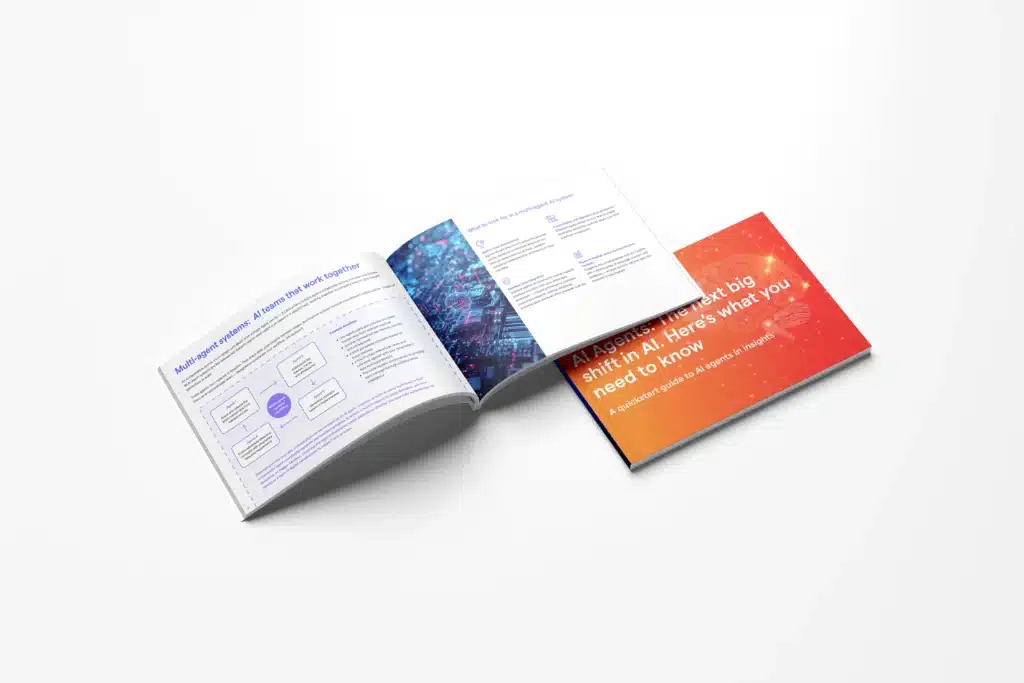
Redesigning roles: What’s next for insights teams
For insights professionals, AI is an opportunity to become more strategic than ever.
“CMI must take an even more critical role as the compass of the organization,” said Beljaarts. “We have to ensure the data being accessed, and the insights drawn, are accurate, meaningful, and consumer-centric.”
This evolution demands new skills: sense-making, storytelling, prompting, and curating. It also requires marketing teams to embrace insights as non-negotiable. “It’s no longer acceptable for marketers to ignore insights,” Davies emphasized. “The tools are there. There are no excuses now.”
Beljaarts put it plainly:
“Insights professionals must be connectors and storytellers. We’re not just delivering research, we’re ensuring it’s interpreted and applied with judgment.”
Organizations that thrive in this environment will build insight fluency across all functions and treat AI as a strategic partner, not a shortcut.

Embedding excellence: People, process, and platforms
As AI capabilities expand, so does the opportunity to standardize excellence.
“We can now encode best practices into the tools, standardize excellence across teams,” said Lenzmann.
But technology alone isn’t enough, said Davies:
“We used to track how often brand managers used the insights platform. If you’re not engaging with insight, how can you lead a brand?”
This is where change management becomes critical. AI might bring the tools, but without adoption, impact stalls. As Beljaarts noted, “It’s very easy when you have a new platform for people to still go back to the old way of working, because that’s what they are used to. So, change management is a very important angle. We all still need to learn how to prompt the right way, for instance, and we are developing training for everyone, from consumer insights to marketing, on how to do this.”
Change management processes have long been a pillar of enterprise software adoption — but with AI, the stakes are different. Organizations must not only introduce new platforms, but rewire habits, build prompting literacy, and shift mindsets across teams.
Success requires the right people and the right processes. Insights leaders must act as educators and change agents, ensuring AI-generated insights are used not just efficiently, but effectively.
Looking ahead: The human, AI-powered future
Looking ahead, the panelists envisioned a future where every business user has their own AI companion, an agent that understands context, role, and objectives, and continuously delivers relevant insights.
Davies was optimistic: “We’ll see better validation scores, stronger concepts, and closer alignment between marketers and consumers, if we use AI right.” It’s not just about speed or automation. The real opportunity lies in improving the quality of decisions, strengthening consumer alignment, and unlocking new creative potential.
Beljaarts left the audience with a provocation: “It’s not about asking questions anymore. It’s about questioning the answers.”
And that, perhaps, is the real competitive advantage.
Key takeaways for innovation leaders:
- Start with insight: Let AI accelerate ideation, but always ground it in genuine consumer understanding.
- Democratize responsibly: Make insights accessible, but support them with training and context.
- Build for impact, not just efficiency: Use AI to elevate the quality of thinking — not just speed.
- Redesign roles and routines: Equip teams to lead with insight, not just react to data.
- Balance autonomy with accountability: Embed governance and ensure humans stay in control.
Want to see how DeepSights is reshaping innovation pipelines? Visit Market Logic to learn how DeepSights and DeepSights Agents are helping organizations embed insight at the core of every decision. Click below to see it action.


